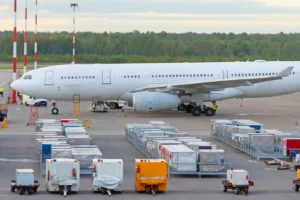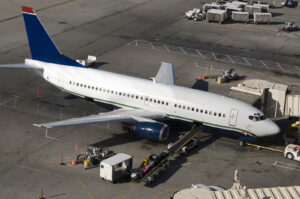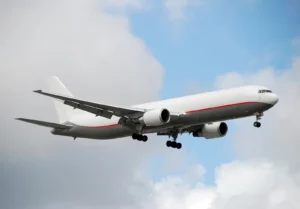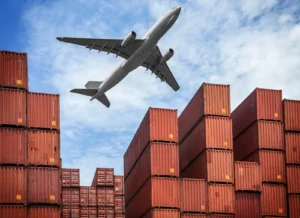
Air freight rates slip a little – with market in ‘wait and see’ mode on tariffs and trade
Air freight rates dropped a little in February, as they often do in the period during and just after Chinese New Year, but remained comfortably ahead of last year. The global Baltic Air Freight Index (BAI00) calculated by TAC Data fell -5.4% in the four weeks to 3 March, but remained ahead by some +10.1% from 12 months before. The data is interesting given huge uncertainties about future levels of global trade – with stiff new tariffs planned on goods imported to the US, plus an end proposed to the so-called ‘de minimis’ exemption for parcels worth less than $800. The uncertainty about the end of de minimis – which was announced and then rapidly postponed as US customs ports became overwhelmed – led to some cancellations of e-commerce flights, sources reported. This also followed a rush of ocean container shipping activity, with imports rising 41% in January at the major US west coast port at Long Beach – as shippers rushed to move goods ahead of new requirements coming in. Container shipping rates have since fallen sharply, with further uncertainty created by a plan announced through the US Trade Representative to impose port fees of $1 million-plus per ship per visit for any ships manufactured in China arriving at US ports. Some view this as potentially good news for air freight rates – if shippers then decide to move more via air cargo instead. During February, however, air cargo sources reported spot rates were continuing to trend lower on the big lanes out of China – though that was not unusual for the time of year. Sources said the market had been weighed down a bit during February by downward pressures due to the issues with the proposed changes on de minimis, though this seemed to be abating as we entered March. The index of outbound routes from Hong Kong (BAI30) fell -6.9% in the four weeks to 3 March – but was still well above levels of the year previously with rates higher by some +13.4% YoY. Outbound Shanghai (BAI80) was lower too MoM by -5.6%, but also comfortably higher still YoY by +12.3%. Out of Europe, rates over the month were also quite firm, with the index of outbound routes from Frankfurt (BAI20) almost unchanged at -0.6% MoM and also still in positive territory YoY by +15.3%. Outbound London Heathrow (BAI40) was lower MoM by -17.3%, but also still ahead YoY by +5.4%. From the Americas, the index of outbound routes from Chicago (BAI50) edged up +0.3% MoM – leaving it still slightly lower by -4.0% YoY. Markets spent the month digesting a barrage of announcements on trade issues from the newly re-elected US President Donald Trump, trying to work out what might be mere threats or bluster or ‘machine gun diplomacy’ for negotiating purchase – and what may be serious, as well as what the effects may be. The speculation about how Trump viewed the use of tariffs focused on four main possibilities: First, that Trump saw he could make threats as potential ‘bargaining chips’ to achieve essentially non-financial ends, such as curbing illegal migration. Second, that Trump viewed tariffs as a potentially important revenue raising tool – that might help him cut taxes elsewhere. Third, that tariffs could be used for strategic defense purposes – to protect vital domestic industries such as steel production. And fourth, that tariffs could be used as a mercantile tool – to help rebalance big trade imbalances, in particular the massive deficits on trade the US has been running for many years with both China and the EU. Some commentators fretted that big tariffs would lead inevitably to retaliation and trade wars, hitting global trade and growth – with the impact disproportionately outside the US on more open trading economies such as in Europe and the UK, where trade is a much higher proportion of total economic activity. Others were focused more narrowly on how an end to the de minimis exemption alone might have a massive effect on the way trade is conducted – with supply chains altered to accommodate onerous new reporting requirements and new fees to be paid. Within the cargo industry itself, however, leading players continue to query how much of a change will be forthcoming – given the huge logistical challenges in trying to implement a new system of checking every single package – plus the potential impact on inflation in the US. On the wider threat of a potential trade war, many market players remain optimistic that – after both China and the US have suffered to some extent from the effects of increasingly tense rivalry in recent years – perhaps a deal might be done after all, not least given Trump’s vaunted credentials as a dealmaker. In the short term, perhaps the most surprising development in markets so far on 2025 has been the largely unexpected strength in European equities – which started the year with stronger gains than the US. Perhaps this simply reflects the fact that US equity values were already relatively high, trading at historically high price earnings (P/E) ratios prior to the new presidential term starting.









